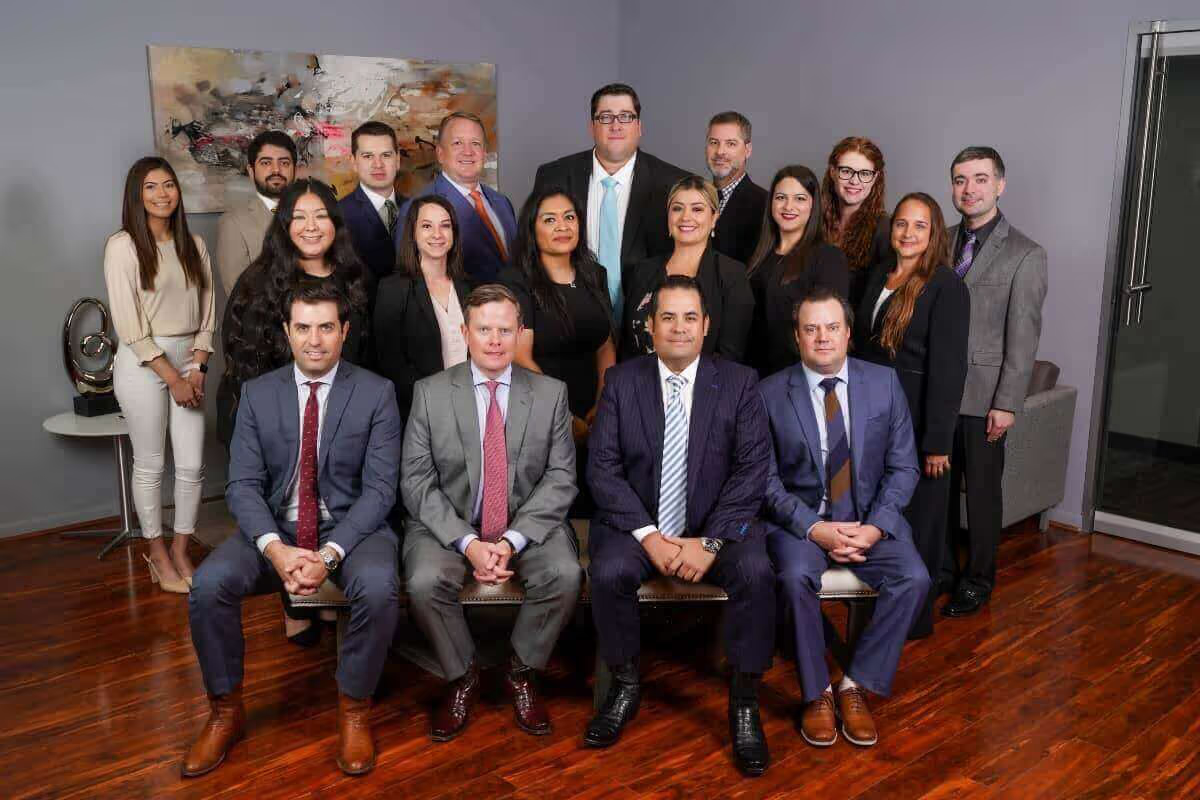Roads across Texas are filled with families—minivans heading to school drop-off, SUVs packed for weekend trips, pickups hauling gear with a car seat in back. Every ride carries the responsibility of keeping children safe. Texas car seat laws make that expectation clear.
From infants in rear-facing seats to older kids transitioning to boosters, the law defines exactly what drivers must do. However, many parents and caregivers still have questions about when the law applies, what to expect after a crash, and how to respond when another driver’s mistake leads to injury.
This post explains how Texas handles car seat use, what’s required by law, and how to protect your family when a wreck puts those safety rules to the test.
To speak with a car accident attorney about how child passenger safety may affect your case, call Pierce Skrabanek at (832) 690-7000 or contact us online. Our team represents injured families across Texas.
How Did Car Seat Laws in Texas Evolve?
Texas first enacted child safety seat requirements in 1985. At the time, the law focused only on children under 2 years old and offered limited enforcement.
That changed in 2009 when the legislature updated the rules to include broader age, height, and weight requirements—and to match national safety research. Public agencies like the Texas Department of Transportation (TxDOT) launched educational programs, billboards, and events like free car seat inspection stations to reinforce awareness.
Today, car seat laws in Texas apply to every child under 8 years old—unless the child is taller than 4’9”. Drivers must also follow rear-facing and booster seat requirements. The goal is to reduce preventable injuries and keep kids restrained in the safest way for their stage of development. These requirements are based on research into the top causes of car accidents, many of which involve speeding, distraction, or improper restraint use.
What Are the Current Car Seat Requirements in Texas?
The current car seat requirements in Texas depend on the child’s age, weight, and height. However, the law isn’t the only consideration; safe usage also follows guidance from groups like the American Academy of Pediatrics (AAP) and the Texas Department of Transportation (TxDOT).
Here’s what Texas car seat laws say:
- Children under age 2 must ride in a rear-facing car seat unless they exceed the height or weight limit set by the seat manufacturer.
- Children ages 2 to 4 should use a forward-facing seat with a five-point harness until they reach the seat’s maximum height or weight limit.
- Children ages 4 to 8 must use a booster seat unless they are taller than 4’9”.
- Children ages 8 to 12 must wear a seat belt and are safest in the back seat.
The Texas Transportation Code also states that car seats must be installed according to the manufacturer’s instructions. Violating these requirements can result in a fine of up to $250, plus court costs.
What Are the Car Seat Weight Requirements in Texas?
Car seat weight requirements in Texas are tied to each stage of child restraint use. The state relies on manufacturers to set the exact limits for rear-facing, forward-facing, and booster seats. These numbers are listed on the seat label and instruction manual.
General ranges:
- Rear-facing car seats—up to 35-40 pounds (varies by model),
- Forward-facing car seats with harness—up to 65 pounds, and
- Booster seats—typically for 40–100 pounds, depending on height and belt fit.
Refer to the car seat’s instructions and ensure it’s installed correctly. The safest seat is one that fits the child and the vehicle and has not expired or been recalled. Improper use or outdated equipment remains a leading factor in car accident injuries among child passengers.
Safety Rules Don’t Always Protect You from Someone Else’s Negligence
Parents follow the rules. They strap their kids in, choose the right seat, and avoid shortcuts. But on Texas roads, other drivers may ignore basic traffic laws—and when that leads to a crash, the consequences land on you.
Call Pierce Skrabanek at (832) 690-7000 or message us online to learn how we help families recover after car crashes involving car seat use.
When Can a Child Sit in the Front Seat in Texas?
Texas law does not provide a specific age for sitting in the front seat, but safety experts strongly recommend that children under 13 ride in the back. This recommendation comes from the American Academy of Pediatrics and is echoed by the Texas Department of Transportation (TxDOT) and the CDC.
When a child must ride in the front (for example, if the vehicle lacks a back seat), extra steps are required:
- Never place a rear-facing car seat in front of an active airbag.
- If no other option exists, the passenger airbag must be deactivated. Texas Transportation Code on child passenger safety seat systems addresses airbag-related safety requirements in these scenarios.
- The seat should be moved as far back as possible.
Check both the vehicle and car seat manuals before placing a child in the front seat. Airbag safety, seat positioning, and belt routing vary by make and model.
Are There Programs in Texas to Help with Car Seats?
Yes. Several state and local organizations offer resources for parents who need help buying or installing a car seat.
Programs include:
- Safe Riders Traffic Safety Program. Sponsored by the Texas Department of State Health Services, this program offers eligible families educational materials and free car seats. Visit the Safe Riders website.
- Local Fire Departments and Police Stations. Many offer car seat checks by certified technicians to ensure correct installation.
- Texas A&M AgriLife Extension. The program coordinates community events and child passenger safety clinics throughout the state.
These programs may also provide inspection forms and documentation that help support injury claims when a crash occurs despite correctly using a child safety seat.
What Are the Safety Seat Laws in Texas for Taxis and Rideshares?
Under safety seat laws in Texas, all drivers—including those operating for rideshare services—must follow child car seat rules. That means:
- Uber, Lyft, and taxi drivers can be fined for transporting a child without a proper car seat.
- Parents and caregivers are responsible for bringing and installing the correct seat.
Plan ahead when using rideshares or taxis to ensure proper restraints are available. Some services offer pre-installed seats for an additional fee, but availability varies by city and vehicle type.
How Does Car Seat Use Affect Injury Cases in Texas?
Proper car seat use can influence how an injury case is handled. Texas follows modified comparative fault rules, which means the injured party’s actions may affect compensation.
When a child is injured and was not properly restrained, the insurance company may try to reduce the value of the case. However, Texas law does not automatically penalize the child or block a case based on restraint violations.
An attorney can evaluate the facts and respond when insurers question whether proper safety measures were followed.
What to Do After a Crash Involving a Car Seat
After any crash—minor or major—take these actions:
Document and Preserve the Car Seat Before Disposing
The National Highway Traffic Safety Administration (NHTSA) recommends replacing any seat involved in a moderate or severe crash, even if there’s no visible damage. Before cutting the straps or throwing it away, take detailed photos of the car seat installed in the vehicle and after removal. Store the seat somewhere secure. Your lawyer may need it to show that proper usage and installation occurred.
Seek Medical Care Right Away
Even without visible injuries, children may show signs of a concussion or soft tissue injury—such as fatigue, vomiting, confusion, sensitivity to light, or irritability—especially after head trauma. A complete medical evaluation can connect symptoms to the crash and create records if care is needed later.
Request the Police Accident Report
This report usually includes where each child was seated, whether seat belts or car seats were used, and what the responding officer noted at the scene, such as whether the car seat appeared to be properly installed or used. These details matter in insurance negotiations and legal claims.
Call a Texas Car Accident Lawyer Before Starting Any Insurance Process
Insurance companies may question whether the car seat was installed correctly or used. When this happens, it’s essential to understand your legal options and protect yourself after a crash. An attorney can help document those facts, gather relevant manufacturer instructions, and ensure the child’s injuries are taken seriously.
Getting legal help doesn’t mean pointing fingers. It means advocating for your child when another driver ignores the rules of the road.
Frequently Asked Questions About Texas Car Seat Laws
Is it illegal to place a car seat in the front seat in Texas?
Texas car seat laws allow it only when no back seat is available. The front passenger airbag must be deactivated when installing a rear-facing seat in front.
What age can a child stop using a car seat in Texas?
Once a child turns 8—or reaches a height of 4’9”—they may use the adult seat belt alone. Prior to that, booster seats are required.
Can I reuse a car seat after a crash?
The NHTSA recommends replacing any car seat involved in a moderate or severe crash. Check your seat’s manufacturer instructions for more guidance.
Are car seat laws the same in every state?
No. Each state sets its own rules. The car seat laws in Texas have specific age, height, and installation requirements that differ from those in neighboring states. You can avoid common mistakes by reviewing how to prevent a car accident, especially when traveling with kids across state lines.
Contact Pierce Skrabanek About Child Safety in Car Crashes
For over 30 years, our attorneys have helped Texans recover after crashes that hurt their children. When another driver causes an accident that injures your child, our attorneys review how the seat was installed, whether it met Texas law, and how to hold the at-fault driver accountable.
Call (832) 690-7000 or contact Pierce Skrabanek online to discuss what happened. You don’t pay unless we recover compensation for your family.
Proudly Representing Texas Residents


.avif)




